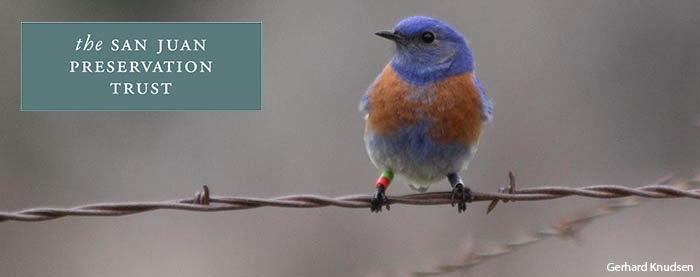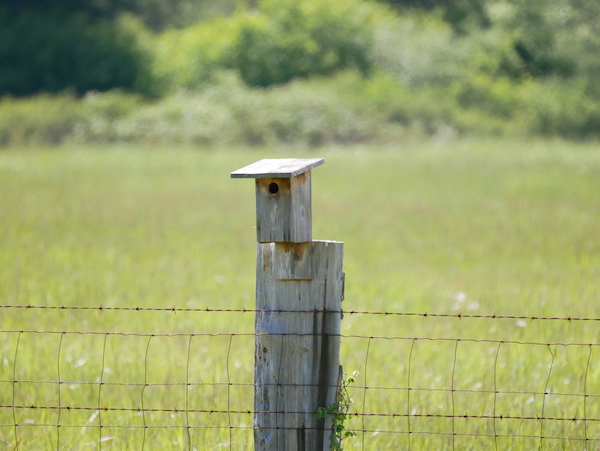
It’s been a good year for the San Juan Islands Western Bluebird Reintroduction Project! Here some stats and noteworthy events from the 2017 season:
- In the spring of 2016, we were disappointed when only 6 individuals returned to the island. This year, by contrast, 20 individuals returned from their wintering grounds: 17 from 2016 (first year in population), 3 from 2015, and 1 from 2014 (the infamous “Al Pacino,” named for his colored leg bands). That is a huge increase in numbers of birds either staying on the island or returning to the island!
- It’s quite likely that one reason the return rate was higher this year is because 6-8 birds over-wintered in 2016/2017 (i.e., they didn’t migrate, but stayed all winter on San Juan Island).
- A total of 23 individuals were translocated in 2017 (10 adults and 13 juveniles). This occurred in a total of 6 events: 2 single females (separate translocations), 1 breeding pair without nestlings, and 3 family groups (separate translocations).

Banding nestlings, August 2017 | Credit: Shaun Hubbard
(Highlights, continued:)
- In 2017 we had two natural recruits (meaning that they weren’t translocated, but came of their own accord): one from the Joint Base Lewis McChord (JBLM) population and one from the Vancouver Island population. (Last year, we had no natural recruitment from other populations.)
- We also had one female that arrived on Lopez Island, set up a home with a willing male, and then flew north to establish another nest with a different partner on Vancouver Island! That is a another positive sign, as it demonstrates the birds are dispersing naturally along their historic flight paths.
- Inevitably, we lost some. We had 6 confirmed and assumed deaths in 2017: 5 adults and one juvenile (confirmed). Nest depredation (raccoons, house sparrows being the most likely culprits) was an issue this year with at least 7 depredation events.
- At the end of this season, the assumed living population is 69 individual birds (28 adults and 41 juveniles). In 2016, by comparison, we ended the year with a total of 35 individuals (12 adults and 23 juveniles). So, in one year we’ve basically doubled our population. Good news!

Female on a fence, May 2017 | Credit: Jeff Brennan
Reminders for nest box hosts and other volunteers:
- If you are hosting a nest box, now is the time to clean it out! And, if you can report to us what kind of nests you find, we would be grateful. We are happy to furnish you with photos of other cavity-nesting bird nests to help you ID it. Just contact Kathleen at kathleenf@sjpt.org.
- Volunteer box monitors: if you cleaned boxes out this spring, now is the time to revisit the boxes you previously cleaned out, fill out the forms provided to you, and return them to Kathleen by the end of December.
- Want to volunteer? We always have need for volunteers, especially in the early spring when the birds start arriving (usually by late February or early March). We need folks who can help check nest boxes, search for bluebirds, assist with feeding birds in aviaries, and help with moving mobile aviaries around. Please contact Kathleen if you are interested!
